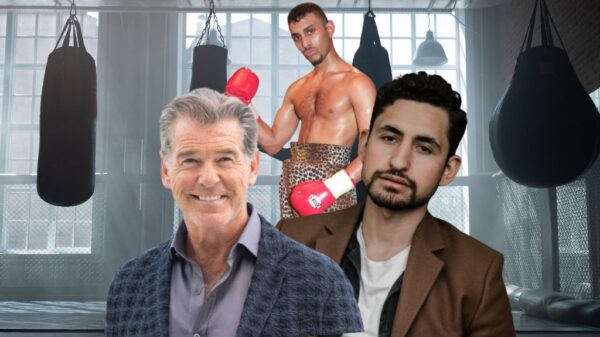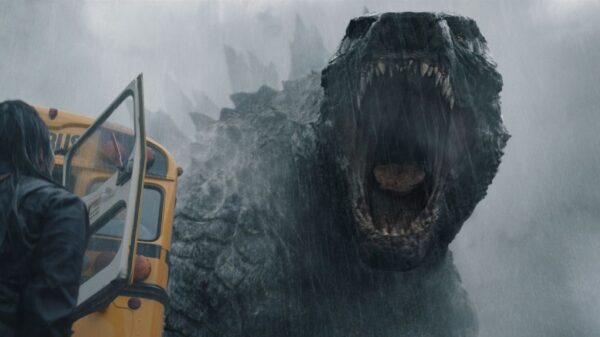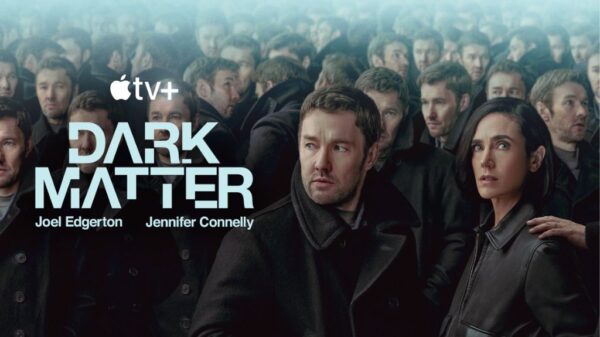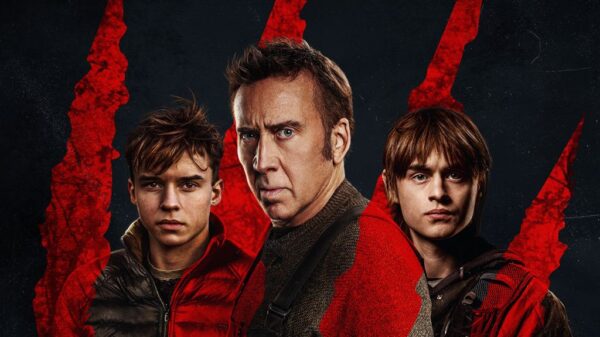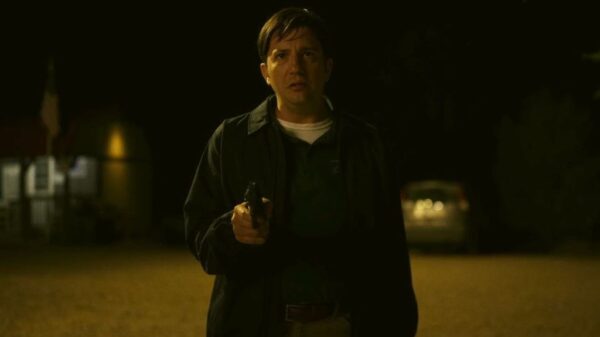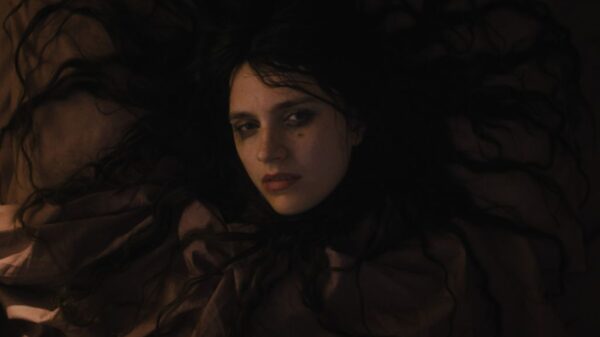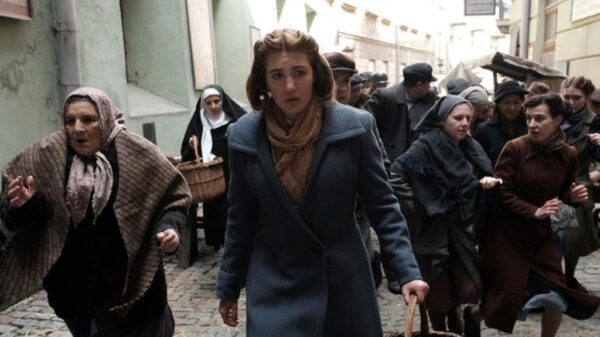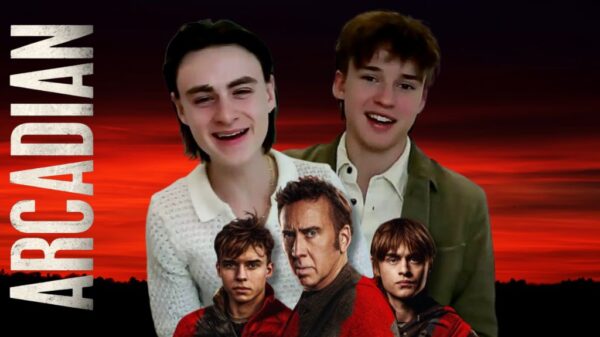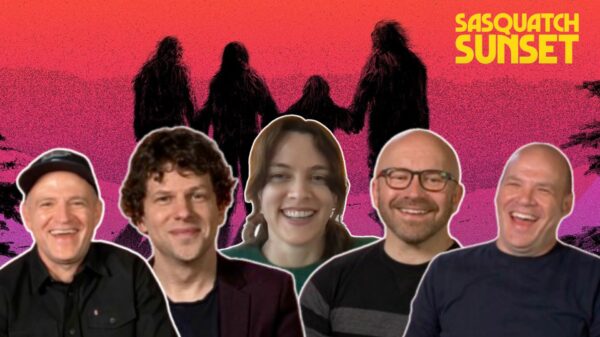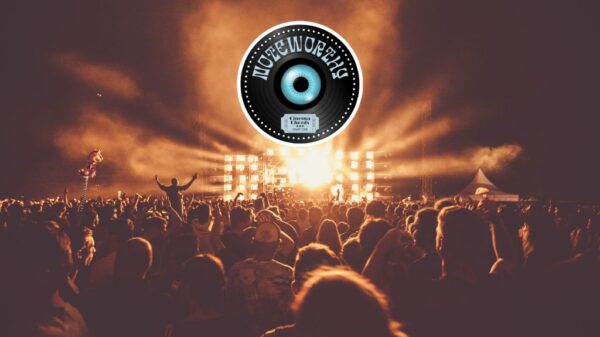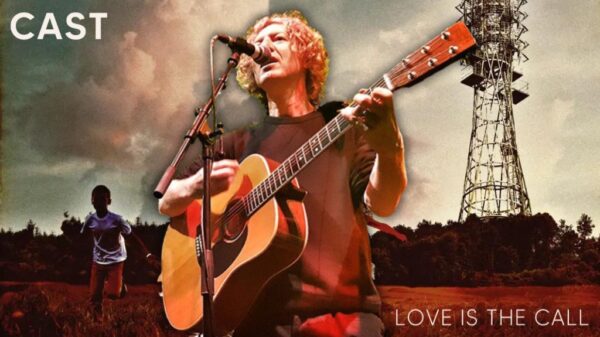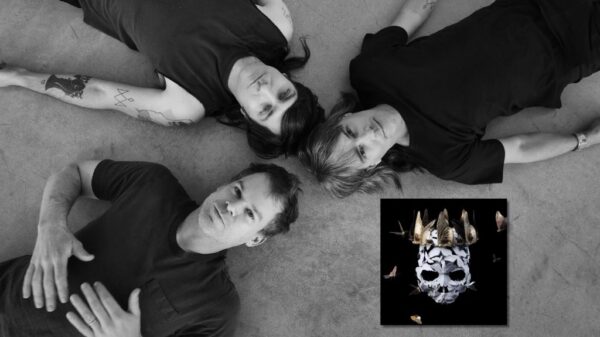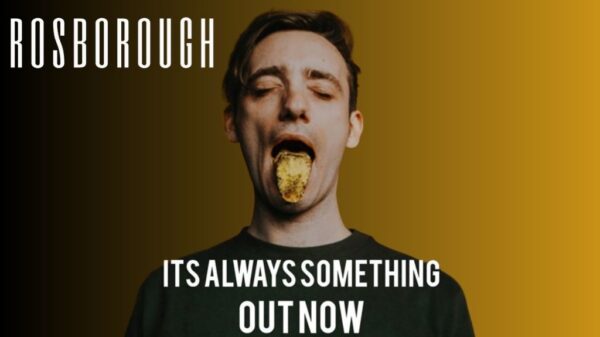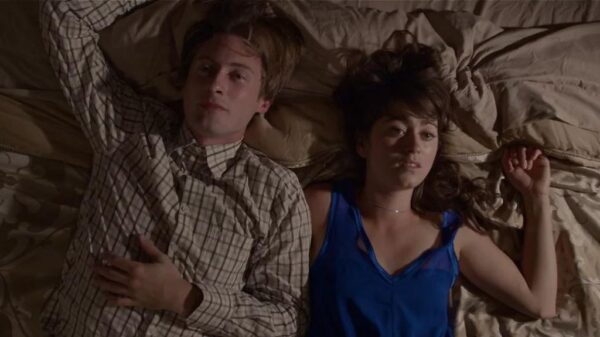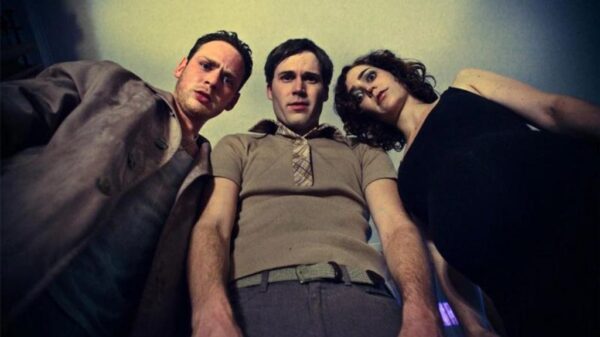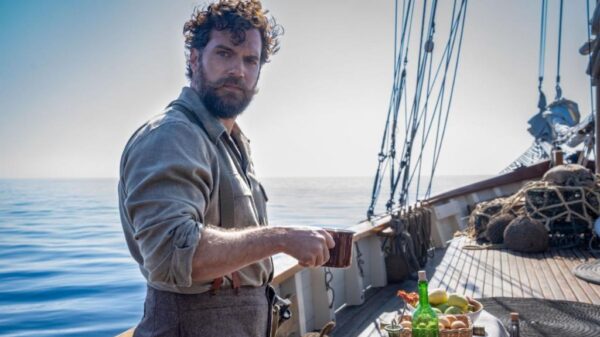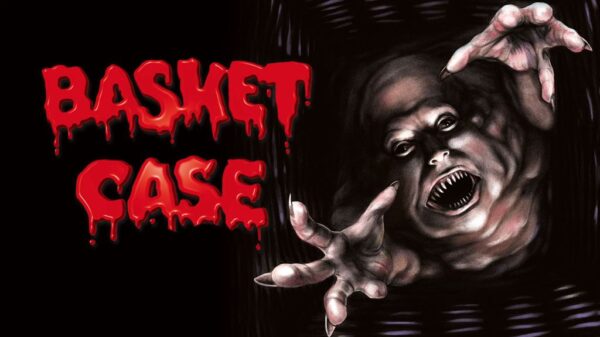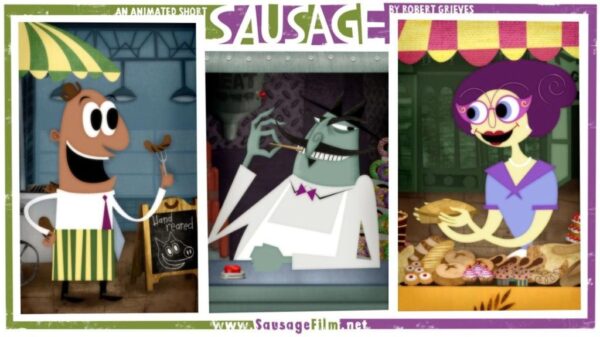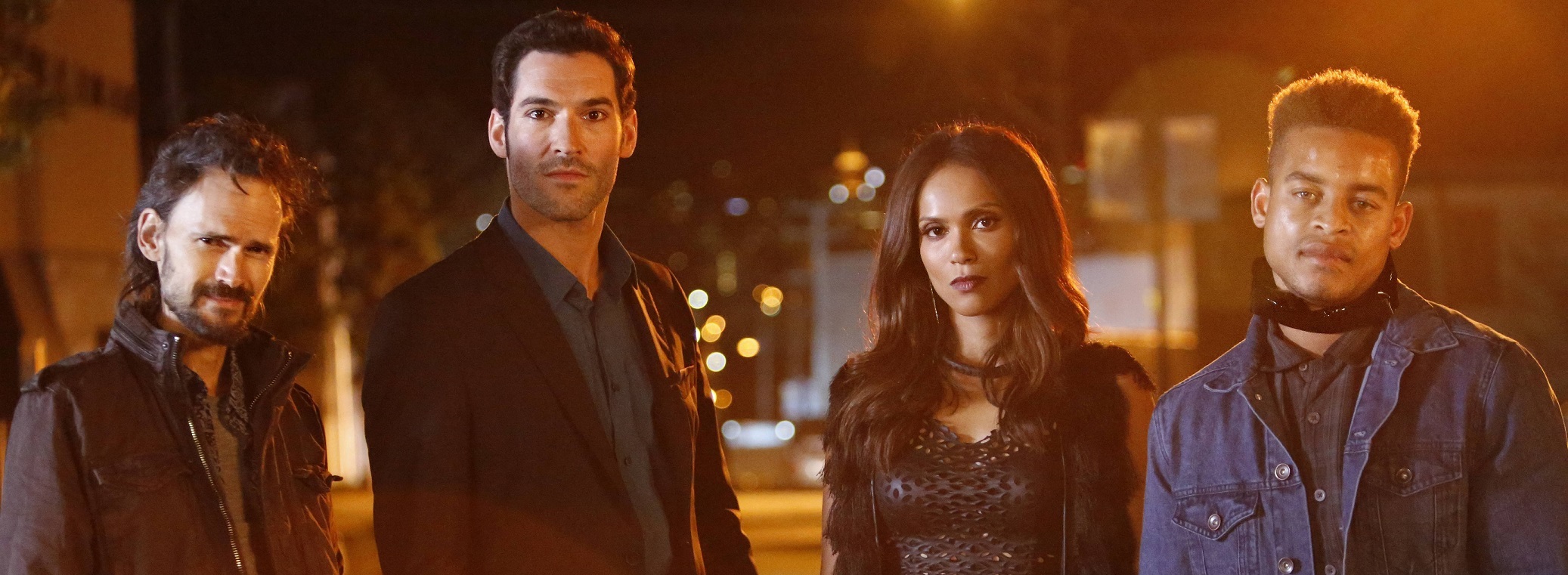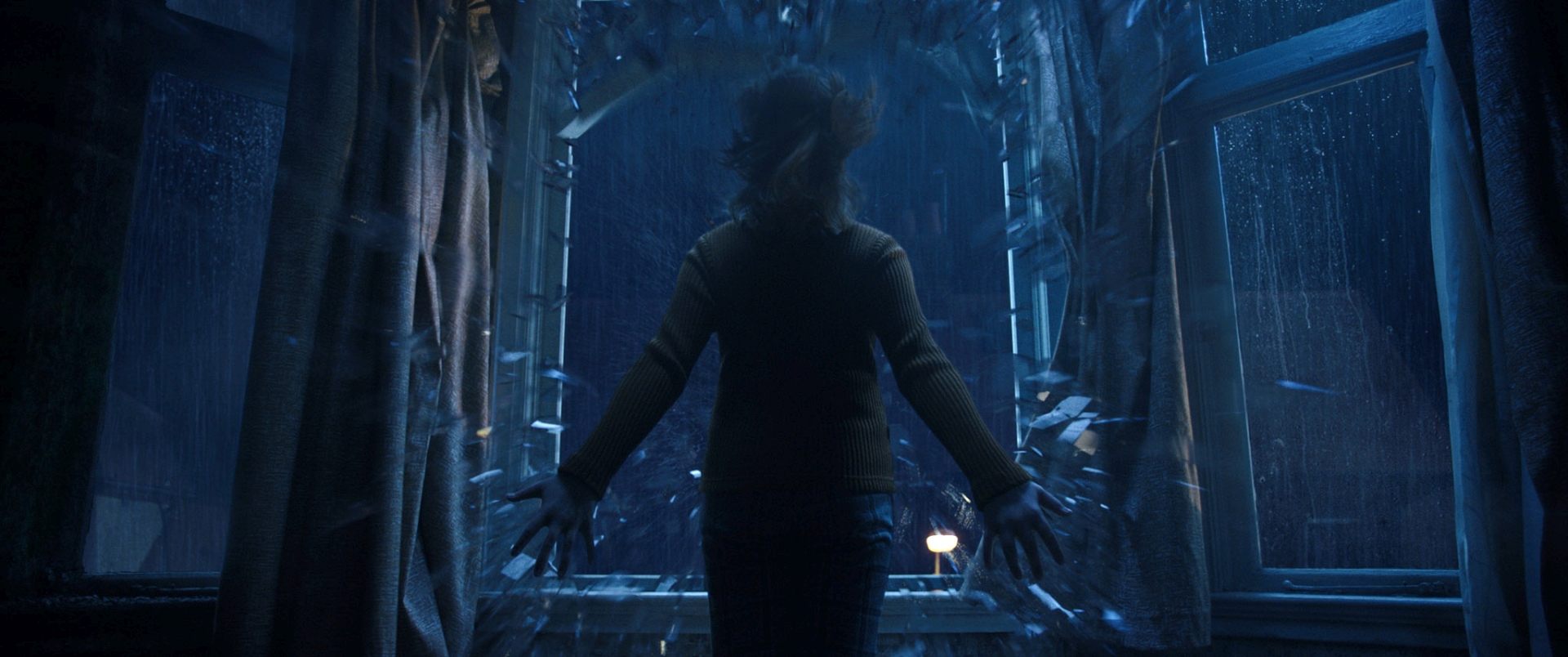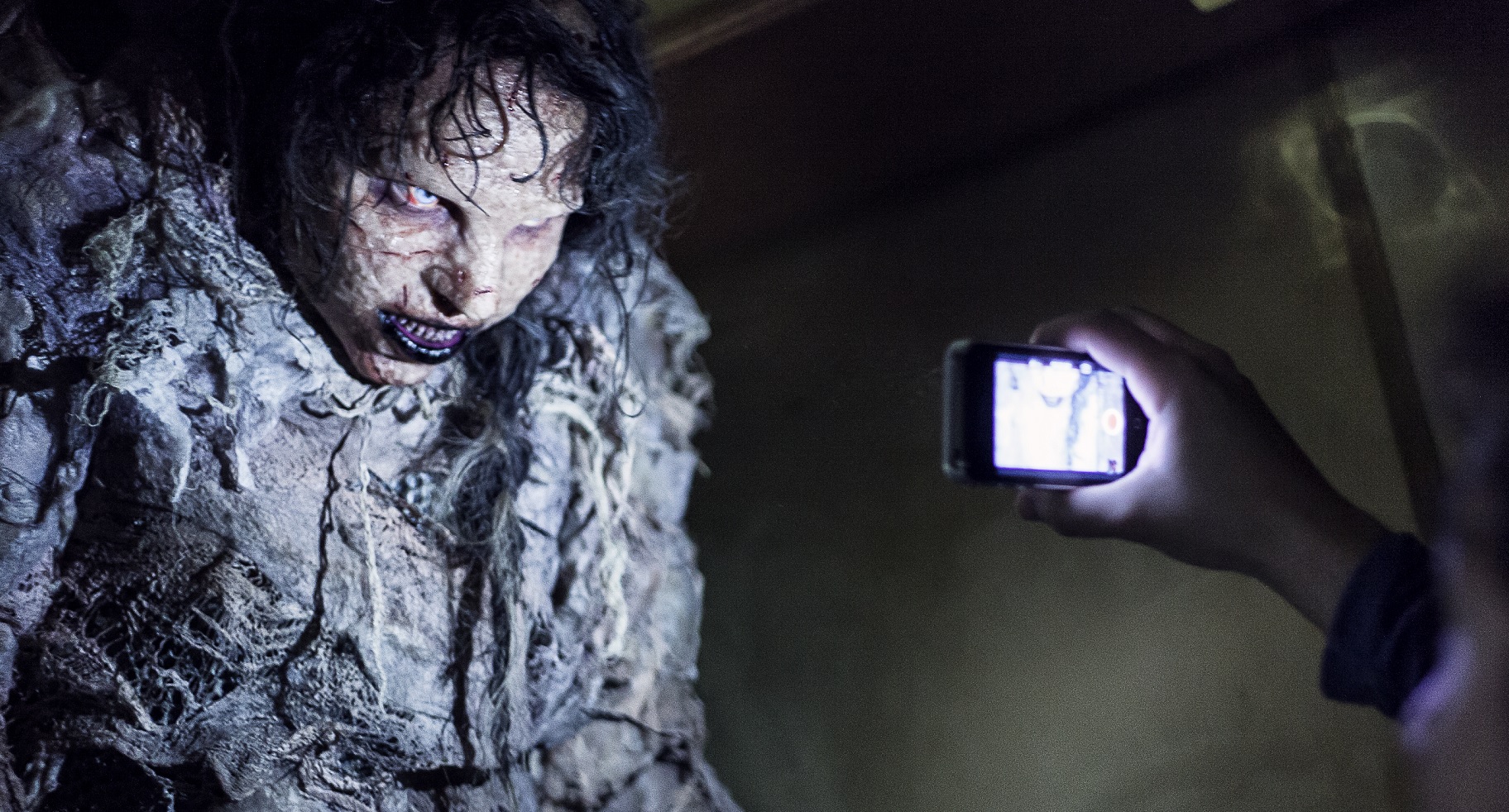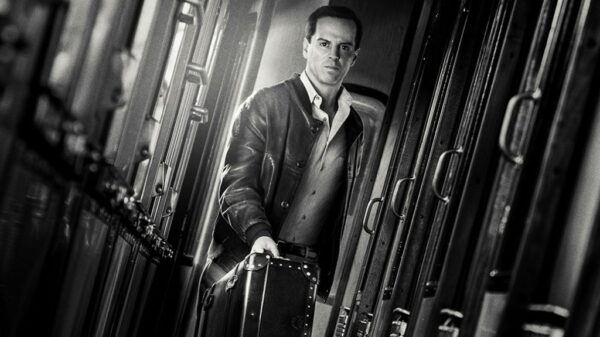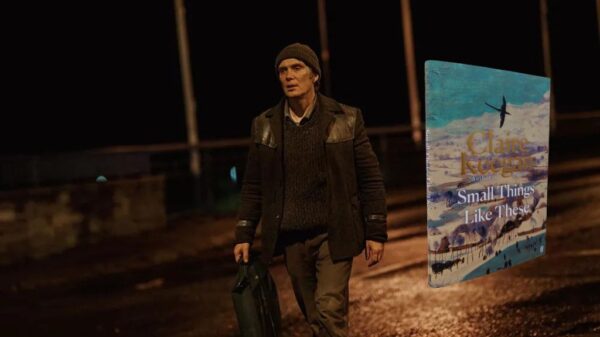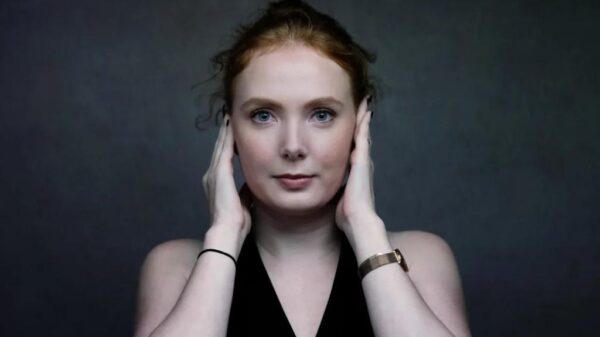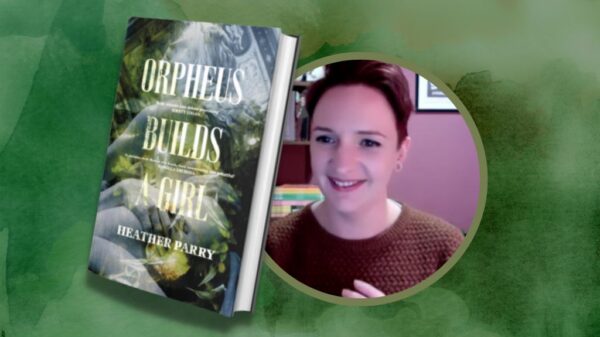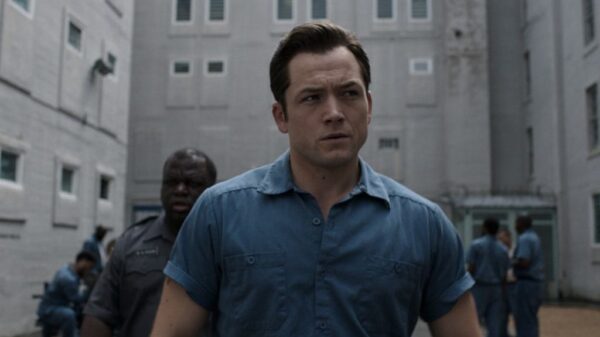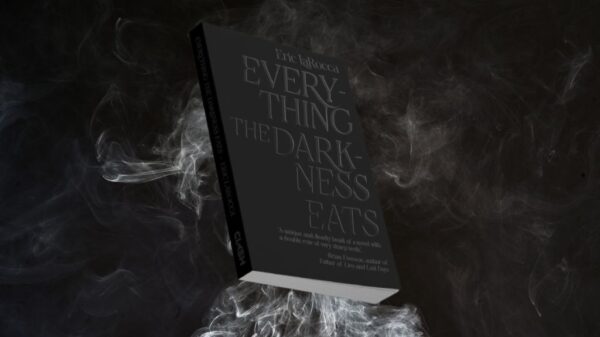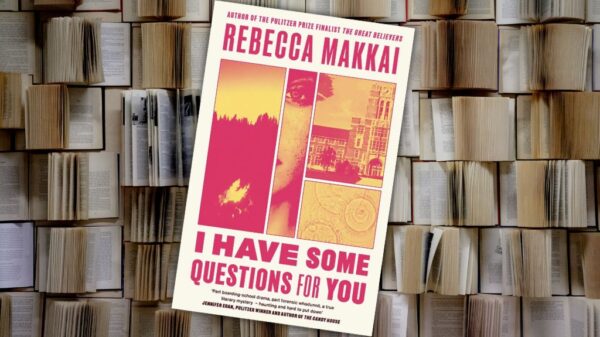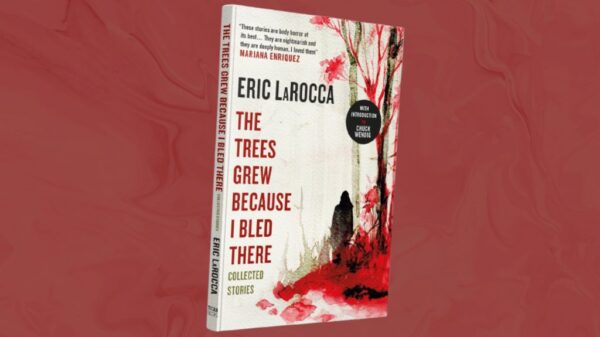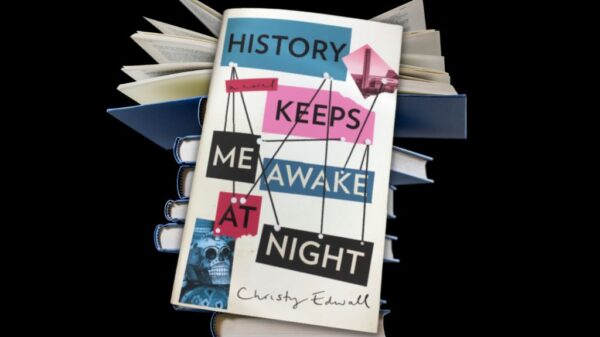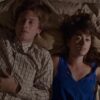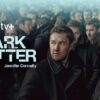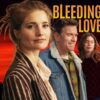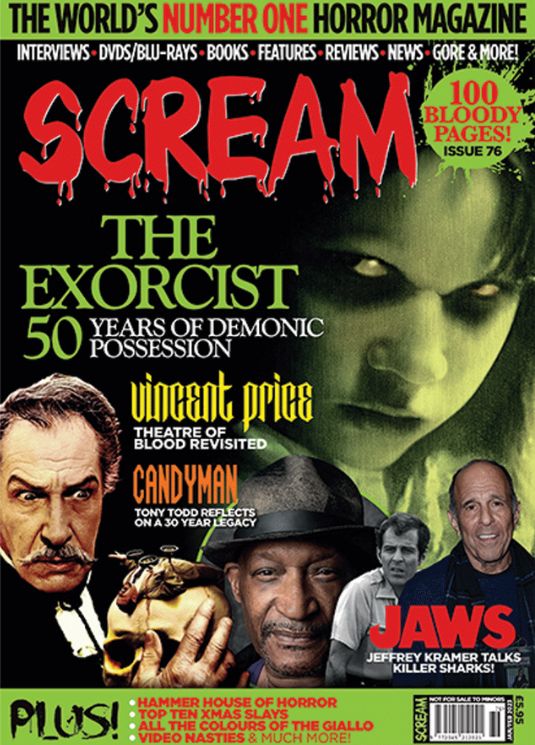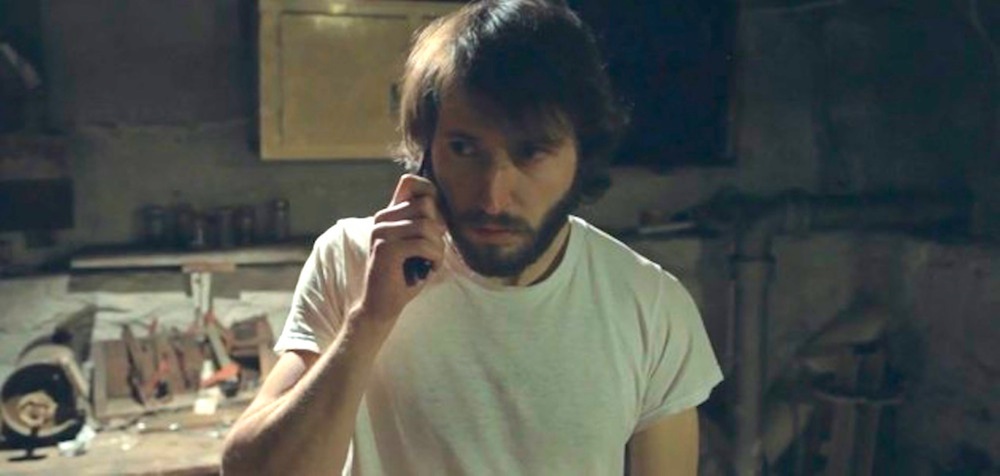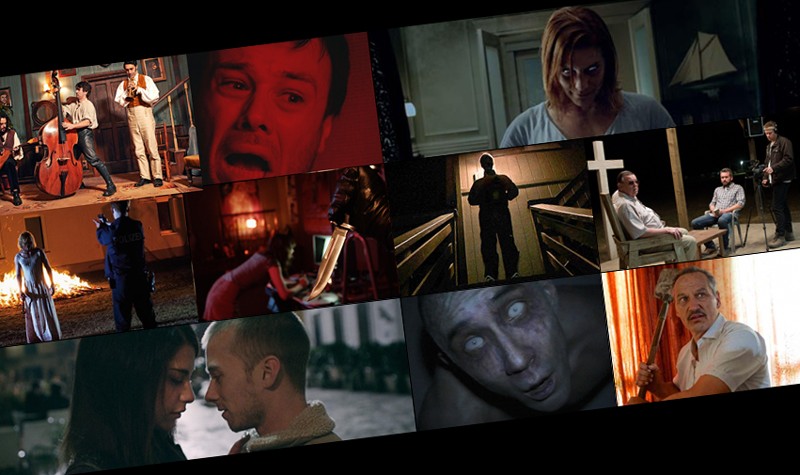Filmmaker Patrick Brice is a graduate of the California Institute of the Arts and his thesis film Maurice went on to win him Best Documentary Short Film at the Florida Film Festival in 2012. After that it wasn’t long before he would venture out and team up with actor Mark Duplass to develop and shoot his feature debut CREEP.
Creep follows Aaron, a videographer (Patrick Brice) who agrees to travel to a cabin in a remote mountain town to meet Josef (Mark Duplass) in order to film what he does in a typical day. At first things seem heartfelt and innocent until it becomes clear that Josef is not the man he claims to be.
After watching the film I can tell you right now that this film is called Creep for good reason. Not only is it gripping but it is actually scary thanks in large part to its performances. So after being stunned into silence when the film played Celluloid Screams, I jumped at the chance to catch up with Patrick Brice to discuss the film, what it was like working with Mark Duplass and his feelings about the found footage in general.
JD: Hi Patrick. Thanks for taking the time to talk with us. Where did the idea for Creep come about?
PB: Mark and I have been friends for a long time and he was mentoring me as I was coming out of film school at Cal Arts here in Los Angeles. Cal Arts is a super experimental art school that specialises in Animation and a lot of conceptual art. My background was in documentary and Mark had seen my thesis film and he really enjoyed it and he got my sensibility. After that we were racking our brains to figure out what would be a good project for us to work together on. It was out of this that the initial idea, which was at that point called Peachfuzz. The initial concept was almost a black comedy and we wanted to make a film that only had two characters. We knew we wanted to make a movie that was just us and no crew or as small as a crew as we could possibly get. So we took those constraints and then the story emerged from that and I guess we reversed engineered it from the beginning.
JD: When the film played at Celluloid Screams the audience audibly gasped and there were a few screams. What kind of reactions have you witnessed when watching the film with an audience?
PB: It’s funny. It has been varied but for the most part it has been fabulous because I never thought that I would make a movie where I would be contingent on hearing audible reactions from the audience wether my movie was playing well or not. So it is interesting to realise that we made a movie like that and sit in those screenings where first of all, I have to get over the fact that I am watching myself on camera which is weird and seeing my apartment in the movie which is also weird, but I try to gage who is laughing and who is extremely upset in the audience right now and whose screaming. A lot of the times with this movie, because the humour doesn’t really lead you on, you’re kind of left to your own devices as an audience member in terms of how dark your humour can get and in terms of what you are laughing at or what is upsetting you. I’ve already noticed that it is a weird movie for couples to watch together as i’ve noticed them getting mad at each other during this movie because the dude is reacting in one way and the girl is reacting in another way or whatever you know. First of all, the UK response has been insane for this movie and it has played so well at the festivals which is so heartening. I just got back from the American Film Festival in Poland and Polish audiences are very reserved and there was like no response because it is a movie where if you go in thinking what the fuck is this and you can get lost. I have been to Savannah Georgia where we have played at the film festival there in front of an entire audience of college students. They were laughing at parts that I have never heard people laugh at which had me freaking the fuck out especially at the end as I’m sure you can imagine.
JD: I certainly can. I bet it was thrilling though.
PB: *laughs* You could say that.
JD: As Creep can be described as a “Craigslist Horror” did you conduct research into any real-life horror stories for inspiration when developing your idea?
PB: Yeah, so Mark had some awkward interactions on Craigslist specifically one where he went to buy a bed when he was living in Brooklyn. The guy that he was buying the bed from ended up going into this whole diatribe about how his girlfriend had left him and how he did not have anyone in his life. Mark basically ended up having a beer with him and feeling obligated to in order to help this guy out. It was the same dynamic that Aaron and Josef have in the movie. Then, two weeks before the movie, I sold a coffee machine that I had got as a wedding present and it was during that interaction that I realised with Craigslist that both parties are trying to get that interaction finished with as soon as possible because as a thing it is just inherently weird. You both feel like the bad guy and you also don’t know what the other persons intentions are either so I don’t know what it is about that, this sort of like new abstract relation that kind of happens as a result of that but it was interesting to think what one of those interactions would be like if it was drawn out over a long period of time.
JD: So tell me a bit more about the writing process. I read that you had a ten-page outline, was the entire film scripted?
PB: No. All we had was the ten-page outline which was essentially story beats. It was a primer in terms of the specific information that is going to need to be revealed in the scene and then it was up to Mark to workshop the scene. We would do probably six or seven takes for each scene where we would do an entire take improvising the dialogue and then watch that take and then pull out what we liked and leave what we didn’t like.
JD: That sounds like it would become a time-consuming process. How long did it take to shoot the film?
PB: Well there was an initial production of five days which was just Mark and I in a cabin then we took that footage home, cut it together and then we showed it to people. It was a good experience and also humbling as a filmmaker to be able to show something to people and say I feel like we’re at 75% there and what can we do to make this better. As an audience member, what would you want to happen and what is working and not working for the movie. Because it was such a low-budget production it was easy for us to go back and reshoot so over the course of a year actually we ended up doing that about five or six times where we would go back and reshoot. The portion of the film that we would keep changing was the last twenty to thirty minutes I would say.
JD: If you shot the film for over a year? Did you have any problems with continuity?
PB: Yeah, we had to essentially go back and watch footage and get haircuts that are exactly like the ones we had in the movie. It was great because it was an interesting and specific challenge as a filmmaker to keep your head in the movie like that and really use the production of the film as your workshoping and story process as opposed to going in with a clear idea of what we had in mind. Instead we let the movie take hold and I think one of the things that has made the movie work is that we did that so many times so we were able to eliminate all those little things that were nagging us initially. Also that started with friends and other filmmakers watching it and then once Jason Blum became involved, which was a year after production began, we became a Blumhouse film essentially and they came in to guide us and bring it ten to twenty percent more towards the horror world with all the added horror and thriller elements to the movie.
JD: I see. So prior to Jason Blum’s involvement did you originally intend to make a horror film?
PB: We intended to make… it’s actually funny as i’m sure this says something about Mark and I’s sensibility and our sense of humour but we wanted to make something that made people feel uncomfortable for eighty minutes so absolutely. We wanted to create a movie with tension, we wanted to create a movie even if its found footage or POV film or whatever you want to call it, we saw it as an advantage as opposed to a set of constraints that we had to work with. There is something very specific that happens with our movie that I don’t feel happens with a lot of found footage movies in that the whole movie there are just these two characters talking to each other and one person is usually holding a camera. As the audience member you end up being complicit in this as you are seeing this window into this very intimate interaction that is happening which is hopefully like watching a train wreck where you can’t do anything to prevent it.
JD: I know you and Mark Duplass are good friends. What was it like to work on set with him?
PB: Well it was a pure collaboration really. In terms of the world of improvised dialogue Mark is amazing. He is one of the best in terms of the ability to be natural and likable at the same time so for me what was exciting was taking this guy who at this point has a reputation for being one of the more likable young actors and make him a psychopath. Taking on that idea that a lot of people who are psychopaths are super likable and super engaging as people or sociopaths I guess. You know, Mark is a super generous, open and just a fearless collaborator. We weren’t as close as we are now going into the movie, we had only known each other a year at that point but we had never been in this kind of situation together or made anything together until this movie. I think it helped the film that we weren’t as close as we are now because part of the movie is these two guys discovering each other. We’d set up situations where Mark would say things where I was not expecting that to happen and I didn’t know where things were going to go so I had to rely on his performance. Some of that stuff is still in the movie. Some of the stuff worked and some stuff didn’t and like I said we would pick and choose.
JD: Seems like you both make a good team.
PB: Yeah.
JD: Referring back to what you said earlier on I read that Jason Blum describes the film as an ‘organic’ approach to found footage. You said yourself that your film is different to the many found footage films out there, could you please elaborate on this and share your feelings towards this style of filmmaking.
PB: First of all whilst we were making it, just because I am an OCD person, I had to have justification as to why the camera was being on was always something that I would question when setting up any shot or sequence. I think it is a movie that hopefully you forget about that conceit in the first fifteen minutes and you go away with the movie but I also think it is important like you said to create tension that exists throughout the entire thing. You’re not meant to feel comfortable whatsoever when watching this movie and there is this implication of the audience where if you engage with the movie as a viewer you do give in to the conceit of the film and I feel like it is incredibly rewarding. But, at the same time, I know that it is a genre that automatically puts up a red flag for people because there has been a glut of material in recent years. Also, it kinda feels like the gig is up in terms of a lot of cliches now associated with found footage like the use of multiple cameras and all this other stuff that has just clouded it and backed it into a corner. What was great about Mark and I doing it before making it was that we did not have a wealth of knowledge about found footage. I had seen The Blair Witch Project and loved that. I had seen Chronicle and thought that was great, but I also feel like that movie they were constantly calling attention to why the camera was being on in an unnecessary way which really took me out of the movie like here you are getting this really emotional story but I keep getting thrown by people going “oh, i like have to turn the camera on now” or “we have to film this”. I can see what that is in there and it is an obvious note to give people when constructing one of these movies but with our movie is that as long as you keep it relatively justified in their actions and you are not talking about it, it is hopefully something that is going to go away. If you’re telling an engaging enough story it is hopefully something that will be left by the wayside and not get in the way of enjoying the film.
JD: Your film is certainly different to the many found footage films out there and may I say is something that is done incredibly well as a film that is actually scary.
PB: Thank you.
JD: Creep uses a few jump scares which work superbly. Now, I understand your background is not specifically in horror did Jason Blum give you any tips to you and Mark that made the scares more effective?
PB: He was incredibly helpful. First of all just the fact that he enjoyed the film in the first place and saw something special about the film in the first place really endeared me to him almost automatically. I know he watches so much found footage stuff because he is considered one of the masters of found footage at this point with the Paranormal Activity series. His other movies are great as well but they are fairly horror genre specific and are very conventional in the genre I’d say so to have him like and endorse this movie that is sort of coming from the left-field was really great. To have him say “let’s make this” and push this more to move it into the horror realm when we went back to do these reshoots is where some of these jump scares came from. Especially the stuff in the last twenty minutes of the movie, we knew what we were doing at that point. As for me as a first time filmmaker making this movie that is kind of this experimental malleable thing to be working within the Hollywood system with a movie like this was great and could only make the movie better. Everything Jason brought to the table only meant that this film was going to be seen by a wider audience and that more people were going to connect with it. The stuff that makes this movie so special and unique and weird is kind of inherent in the material and you would have to do a lot to take that out so it was a pleasure and a delight to be able to work with Jason and have him shepherd the movie along for us.
JD: Great stuff. If you don’t mind me asking, what did you shoot the film on?
I don’t know the exact name of the camera but it is a Panasonic HVX and is the one that takes the compressed cards so I think that is one of the things that ended up helping us in the long-run as we shot with a camera which is from 2007/08. You know, one of the things that I have noticed in contemporary found footage is that it almost looks too clean shooting it with these new cameras so it was nice to have this little added benefit of shooting with this camera that gives this sort of older look which will hopefully suspend your belief a little bit more. We also have plans to shoot the second one with the same camera.
JD: A sequel? That’s interesting, I’ll ask you about that later.
PB: Yeah.
JD: There’s a scene in the film where you are turning around so quickly with the camera that there is very little room or time for people to hide. So tell me about your crew. How big was it?
PB: *laughing* There is no crew at that time. We had Chris Donlan who is our editor and was helping us out but other than Chris it was just us. Chris is great and one of my oldest friends and he actually edited another genre film that Oliver Stone’s son made Graystone Park and i’m not sure if you have seen it but it’s another found footage film.
JD: Yes. I’ve not seen it but I am aware of it.
PB: Okay. So Chris had edited that and then he was editing commercials and stuff so when this project first began I had asked him to come on board. I already knew that he was a great collaborator but it was really nice to have him involved and especially getting him on set when were there to get a third voice in this situation, it really helped. So for the second and third one we are planning on having a minuscule crew too.
JD: A trilogy? Now i’m getting even more excited.
JD: So what was your most memorable memory on set?
PB: My favourite scene to shoot was the final scene and i think it was mostly because it was one that i was most aesthetically excited about and felt like it was truly something new and something that was going to elevate the film. Also the scene of stalking around at Aaron’s apartment was really exciting for me. But when the film started to click and we had a good idea of what we were doing the fact that we were willing to pull off these horror sequences just to try stuff out you know throwing it all at the wall and seeing what sticks. When you are making a movie that way it’s like you are in the same child-like mindset like you’re making a movie with your friends when you’re a kid. The thing that is different is that you have developed your taste at this point and you’re able to decide what’s good and what’s not good which is helpful but then at the same time you are relying on a chance. So being able to do these little manoeuvres and watch them back to realise what works is one of the nicest things to realise.
JD: I want to talk about specific parts in the film now that really but I don’t want to spoil things for our readers so I’ll avoid any potential spoilers. The first thing to come to my mind is Peachfuzz, where the hell did the idea for that come from?
*Patrick laughs*
PB: That came before we thought of the mask. Mark called me one day whilst we were developing it and said “I don’t know what we are doing in this movie but I think we should call it Peachfuzz.” It just came to him like from the sky and I was like absolutely, that’s perfect. I always thought it was an intriguing name for a movie so it was Peachfuzz for a year but then when we brought Jason Blum on board he said that there’s no way in hell that this movie is going to be called Peachfuzz which ultimately I agreed with him. So that is where Peachfuzz came from and then once the mask came in we thought that should be Peachfuzz and it became this organic process of connecting the dots and yeah it came from Mark and I’s weird sense of humour that thankfully we share with other people.
JD: The next scene I wanted to ask you about was the heart in the middle of the forrest. What was the story behind that was it just pure luck that you came across it as both your reactions in that scene felt very genuine.
PB: That is because it was very genuine. We were filming the scene at the restaurant and we knew we were going on a hike but we did not know what we were going to find it was just like Mark’s character describes in the movie. We talked to one of the waitresses at this restaurant that we were at and we asked her if there was any good hikes around that we could go like any good spots in the forrest and she goes oh yeah there’s a heart rock out in the forrest and we were like okay that sounds good so let’s incorporate that into the movie. Going out there we were really trying to find it but we had no idea where it was going to be so what you are witnessing as an audience member is us finding it as well basically.
JD: Now one of the most uncomfortable scenes in the film was Tubby Time. Whose idea was that?
PB: That was from both of us. We needed a hook and a signal to audiences that things were really going to get fucking weird with this movie. We also wanted it to be something that could be perceived as something that is relatively innocent and not necessarily dangerous. The funny thing is that I love Harmony Korine so I was just thinking about that kid eating spaghetti in Gummo and just how gross the bath tub is in general and it also came from a slight desire to see Mark naked as I am sure this is what people want.
*we both laugh*
JD: I’m sure the ladies and some of the guys thank you.
PB: Yes, I hope so.
JD: Moving on, you have already touched upon this earlier in the interview but can you tell me more about the second and third instalments of the planned Creep trilogy?
PB: The word is out. The plan when Radius purchased the movie for distribution part of that deal was that they would purchase two sequels as well. We are planning on shooting Creep 2 by the end of the year so that is the plan at this point. I’m really excited about that and part of the reason I was late today was because I was having a meeting with Mark going through the movie. Obviously I can’t say anything else at this time…
JD: No, I understand. To be honest as I don’t want to know about it. I want to sit there when it’s ready and think to myself what the hell are they going to do next.
PB: Yeah, for sure. I can say that I feel like seeing how audiences react to the first one and what particular moments audiences are reacting to positively. Our goal with Creep 2 is to take that material and string it out as much as we possibly can. I feel a great sense of freedom to make a movie this way, I can’t think of another model where when you’re making a movie there is so much standing in the way between your ideas and the execution of the movie in terms of money and involving so many different people and all that stuff. So it seems nice for these movies to really retain that sort of freshness that comes from taking those moments on the spot with people that are really smart and have great taste and great intuition when it comes to what works and what doesn’t. I’m like beyond in love with the genre community for accepting this movie. That is the one thing we were most worried about especially having Jason and his brand attached to it. We didn’t want to step on anyones toes and we wanted to feel like we were contributing to something so it’s been nice to get that reaction so far.
JD: Has the experience of making Creep turned you on to the idea of making more genre films beyond the planned sequels?
PB: Absolutely. Especially after making something with this much creative freedom with the material going into it. I have always loved horror movies and grew up watching all the Friday the 13th movies, all of the Freddy’s and all that good stuff. It was all very much taboo in my family as no one liked to watch them but I would always seek them out. As I have grown as a fan and filmmaker and seen more stuff and more sophisticated versions of horror like The Shining and stuff like that, this really nailed it for me as one of my favourite genres to watch and a pure pleasure so yes I am absolutely interested in it. I think whatever I do will have a strong element of uncomfortable humour just because it is something specifically that I do and what I like.
We’d like to thank Patrick for taking time out to speak to us. Creep has no confirmed date for general UK release yet but you can guarantee that we will keep you posted.
Note: (JD) Jon Dickinson, (PB) Patrick Brice.


